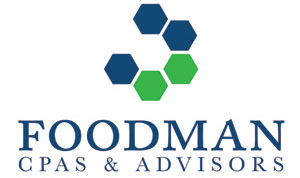Are Compliance Officers at Financial Institutions Now in the Hot Seat for Fines? was published by JD Supra on 8/1/16.
Otherwise reputable Financial Institutions continue being sanctioned for regulatory non-compliance. Well known
“household” names continue receiving fines for failing to establish and implement adequate Anti-Money Laundering (AML) procedures. The Financial Industry Regulatory Authority (FINRA) recently fined Raymond James & Associates and Raymond James Financial Services $17MM. According to FINRA, the two firms failed to prevent, detect, investigate, and
report suspicious activity for several years. Apparently, compliance officers and other individuals (partners, directors,
officers or employees) can bear personal responsibility for failures to enforce Bank Secrecy Act/Anti Money Laundering
standards; the AML Compliance Officer was also personally fined $25 thousand, and suspended for three years. Brad
Bennett, FINRAs chief of enforcement, said: “This case demonstrates that when there are broad-based failures within
specific areas of responsibility, we will seek individual liability where appropriate.”
Meeting regulatory requirements and staying up to date with regulatory compliance developments continues being a
priority for Financial Institutions. The literature indicates that AML programs are more effective when tailored to specific
business units within an Institution, as opposed to different procedures implemented across different business units. This
is because this “Band-Aid” approach creates an inability to detect suspicious activity.
Currently, Compliance is organized as a stand-alone function with the Compliance Department reporting directly to the CSuite (top officials whose title start with the letter C) of a Financial Institution. This type of reporting ensures
independence, raises its profile and makes certain that the Financial Institution’s leadership team is educated regarding
compliance matters. Involvement at the C-Suite level assures that senior management is setting the compliance tone
across the entire organization. The Chief Compliance Officer at a Financial Institution ought to be a direct report to the
CEO; helping the Institution navigate changes and regulatory scrutiny.
According to the FCPA (Foreign Corrupt Practices Act) Compliance Report, the evolution of the role of the compliance
officer was widely discussed during Compliance Week (held in May, 2016). The separation of the Chief Compliance
Officer (CCO) from the General Counsel’s office is an upcoming structural change. The CCO must know “how to do
compliance”. Not just “know the laws and regulations”. The upcoming structural changes for the CCO are summarized as
follows:
• CCO is empowered
• CCO is independent
• CCO has a seat at the table
• CCO has a line of sight
• CCO has resources
Because no two Financial Institutions are alike, Regulators find themselves in a world of procedural inconsistencies by
Institution, having to clarify, and re-clarify, what they are looking for. That said, compliance probably ought to be
simplified, viewed in a holistic manner and allow Financial Institutions to conduct business and take care of clients. This is
what is also known as Compliance 2.0 – an agent of change to the Compliance world.
Financial Institutions should not be victims of their own making. They need to take into consideration the structural
changes that Compliance 2.0 is presenting, and prepare accordingly. This ought to help preserve their reputation and
continuity.
Are Compliance Officers at Financial Institutions Now in the Hot Seat for Fines





